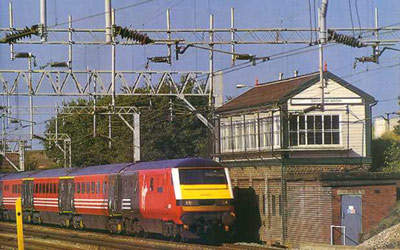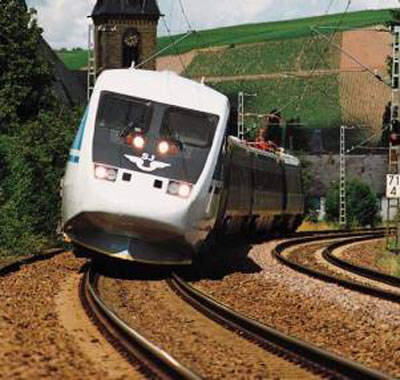In July 1999, Railtrack awarded a contract to Balfour Beatty Rail and Westinghouse Signals Ltd for works in the Willesden area on the West Coast Main Line.
The work package included renewal of the signalling infrastructure and remodelling of some junctions between Kensal Green and Hatch End in North London, it also included the upgrading of the low level goods lines to passenger standards.
West Coast Route Modernisation
The project is part of Railtrack’s £5.4bn ($7.8bn) West Coast Route Modernisation (WCRM), which aims to replace some 130 life-expired mainline signalling systems, which date back to the 1960s, on a ten-mile section of track in north west London.
The new signals will allow an eventual increase in train speeds to 125mph on the fast lines and 100mph on the slow lines, from train speeds of 90–110mph on the fast lines and 75–90mph on the slow lines.
The new equipment is safer, considerably more reliable and will allow trains to run in and out of Euston faster and more frequently. However, during the construction period, which was strategically set during the year 2000 Christmas holiday period, when most rail customers were on holiday, services were severely restricted. Railtrack stated that passengers would find that when they returned to work in the New Year, services would be back to normal.
The resignalling work was the third major WCRM project, coming after the Proof House Junction and Euston remodellings.
Railtrack’s multi-billion pound infrastructure investment on the West Coast Main Line was already well underway when the signalling project started. This included the awarding of contracts over £600m to remove bottlenecks, upgrade power supplies and provide suitable control systems.
It was hoped that the new investment would enable trains to achieve shorter journey times, much higher levels of passenger comfort and improved punctuality. In particular, it provides a network to accommodate tilting trains operating at speeds of up to 140mph, slashing journey times on routes from London to the Midlands, North West England and Scotland.
Solid state interlocking signalling
The project was estimated to cost in the region of £55m ($79m). It required the two main contractors, Balfour Beatty and Westinghouse Signals Ltd, to install solid state interlocking (SSI) signalling on the West Coast Main Line between Queens Park and Hatch End.
The project was commissioned during a nine-day period starting on 24 December 2000. The Alliance principles ensure that all objectives were aligned and that all parties share in the risks and rewards on the project.
Installation of the permanent way works began in September 1999, and resignalling works began in 2000, and have been carried out during a series of weekend possessions. Much of the work over the Christmas period involved signal testing and commissioning. The renewal work including remodelling and resignalling of the infrastructure was completed in January 2001.
Other elements of the project included: six new crossovers, three new turnouts and the recovery of 12 point ends; OHLE work to match the permanent way alignments; installation of 4,000m of safe walking routes; signal gantry refurbishment; the installation of 84 new signal posts, six cantilevers and one new gantry.
It also included the installation of a new 30mph double junction at Brent and the upgrading of two goods lines to accommodate passenger trains and allow for bi-directional working.
The project has made it easier for trains using the West London Line to access the West Coast slow lines by diving under the main lines rather than being held by signals waiting for a path to the slow lines. The transformation of what are known as the up and down Willesden relief lines from freight only, to bi-directional passenger train usage also, enable this to happen.
Signalling control for the ten-mile area has been switched from Willesden power signalbox, which has now been closed, to the new Wembley signalling centre.
Track replacement
The work to replace the track equipment at Willesden Junction was carried out in October 2004. Network Rail financed £3.5m for the track replacement project, which replaced several railway crossovers. The railway between Queen’s Park and Stonebridge Park was closed for nine days during the replacement.






